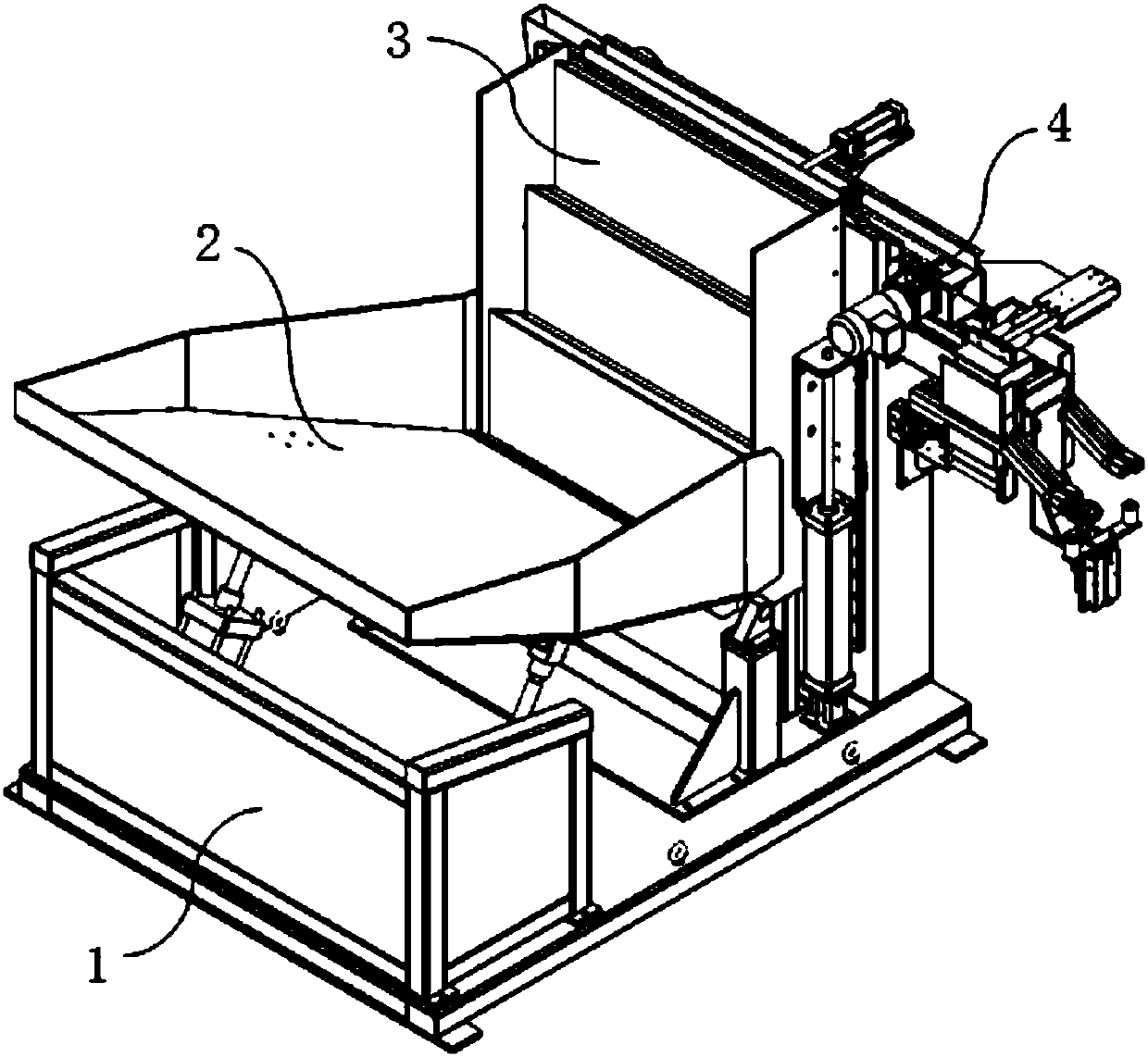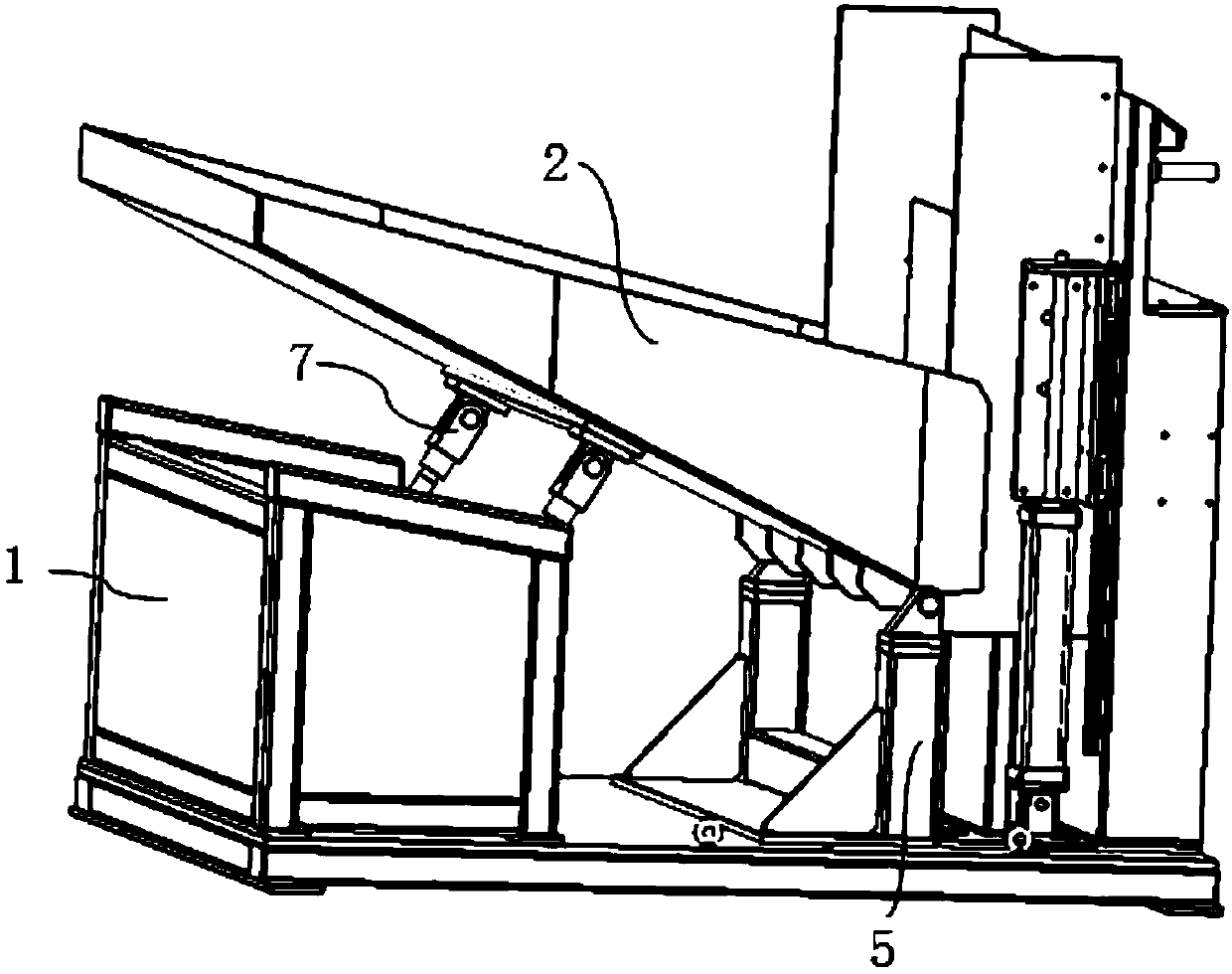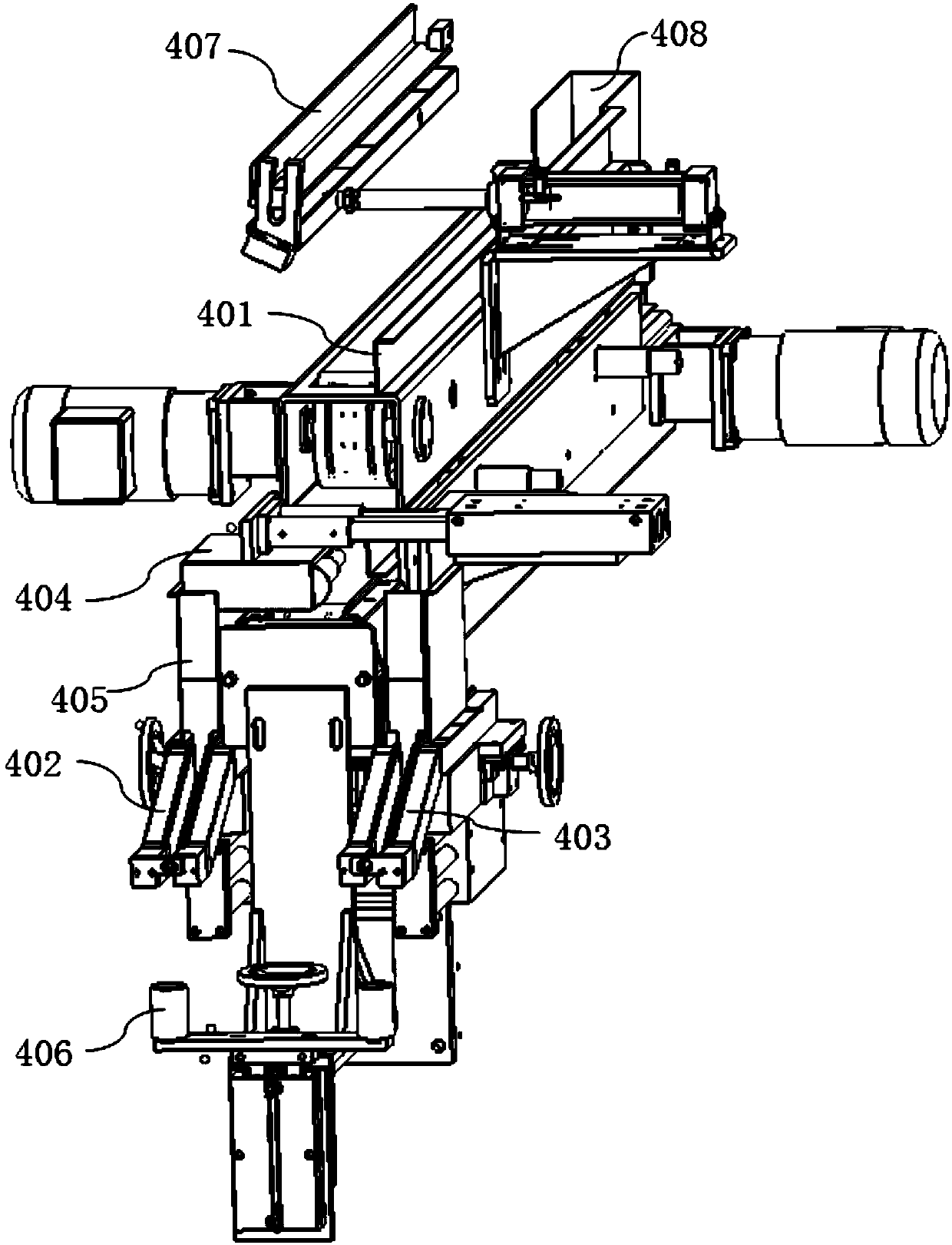Unordered feeding device
A positioning device and material channel technology, which is applied in the directions of transportation and packaging, conveyors, conveyor objects, etc., can solve the problems of lack of positioning devices in the transmission channel, reduced feeding efficiency, workpiece stacking, etc., to ensure transmission efficiency, increase Feeding efficiency and force balance effect
- Summary
- Abstract
- Description
- Claims
- Application Information
AI Technical Summary
Problems solved by technology
Method used
Image
Examples
Embodiment Construction
[0032] In order to make the object, technical solution and advantages of the present invention clearer, the present invention will be further described in detail below in conjunction with the accompanying drawings and embodiments. The specific embodiments described here are only used to explain the present invention, not to limit the present invention. In addition, the technical features involved in the various embodiments of the present invention described below can be combined with each other as long as they do not constitute a conflict with each other.
[0033] Such as figure 1 As shown, the disorderly feeding machine using the material distribution positioning device of the present invention includes a support 1 , a material bin 2 , a feeding mechanism 3 and a material distribution positioning device 4 . Bracket 1, feed bin 2, and feeding mechanism 3 are the main components of the ladder feeding device, such as Figure 10 As shown, the step feeding device is connected wi...
PUM
 Login to View More
Login to View More Abstract
Description
Claims
Application Information
 Login to View More
Login to View More - Generate Ideas
- Intellectual Property
- Life Sciences
- Materials
- Tech Scout
- Unparalleled Data Quality
- Higher Quality Content
- 60% Fewer Hallucinations
Browse by: Latest US Patents, China's latest patents, Technical Efficacy Thesaurus, Application Domain, Technology Topic, Popular Technical Reports.
© 2025 PatSnap. All rights reserved.Legal|Privacy policy|Modern Slavery Act Transparency Statement|Sitemap|About US| Contact US: help@patsnap.com



